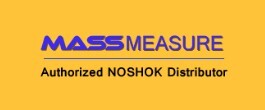Intrinsically Safe vs. Explosion-Proof: Which One to Choose? NOSHOK
Many industrial processes and working conditions are susceptible to explosions because of combustible products they involve. Industries such as oil and petroleum, mines, and others use highly flammable and combustible materials for a range of applications. If not handled properly, they can wreak havoc on the plant, workers, and the environment. Industries are therefore required to use suitable components, including pressure measurement devices, to combat this risk.
Pressure transmitters come in two types: explosion-proof andintrinsically safe pressure transmitters.Both of them can provide you with the protection you require; however, you should not use them together as it is not a good practice. This brings down to choosing between the two, which can be challenging. We have pulled together a few things to help you choose the right one. Let’s see:
Intrinsically Safe vs. Explosion-Proof
Intrinsically safe pressure transmittersoperate at low voltages and low current. The required power supply is placed away from the hazardous area in a safe location. Also, a Zener diode barrier controls the power that goes to the pressure transmitter. With low power comes the assurance that the thermal and electrical energy in the transmitter is limited, reducing the chances of ignition. In simple terms,intrinsically safe pressure transmittersdo not leave room for explosions in working conditions.
On the other hand, explosion-proof pressure transmitters work on the assumption that explosions will occur but are built to withstand them. They come with a tested protective enclosure that does not allow any flames, sparks, or hot gases generated within the transmitter to escape. Simply put, with these types of pressure measuring devices, explosions may occur but remain within the transmitter and enclosures.
Which one to choose?
The type of pressure transmitter you should choose hugely depends on certain aspects of your applications. What flammable products are involved in the processes? Where will you locate the pressure transmitter? What are your space and power requirements? However, one factor that doesn’t require your much attention is the unit price. Anintrinsically safe pressure transmitteris usually less expensive than an explosion-proof type. But you may need to consider the cost of the barrier needed for an intrinsically safe version. Similarly, an explosion-proof version has the extra cost of wiring, rigid conduits, and conduit seals. But since it comes with a protective enclosure, you don’t need to build a separate one
Final note
Choosing between an explosion-proof andintrinsically safe pressure transmitterdoesn’t have to be challenging, provided you know the difference between their functioning and requirements.
If you are looking forintrinsically safe pressure transmitters,we have a complete range of pressure measuring devices to meet your industrial needs. Get in touch with us today to discuss your requirements and let us help you.1-888-509-0111



